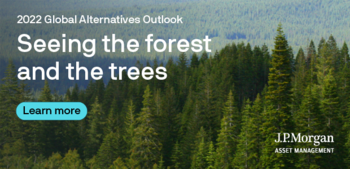
Infrastructure investing is becoming foundational in investment portfolios, providing opportunities for lower-volatility returns that historically have low correlation to equities and bonds — an opportunity for downside protection in a crisis, demonstrated most recently during the COVID-19 pandemic. We believe core infrastructure assets, especially in OECD markets, will continue to find investor support.
Recently, governments have pledged their commitments to transitioning to a lower carbon world, making investors even more enthusiastic about long-term investments in infrastructure — renewable energy in particular. When making long-term investments in communities' essential services, sustainability is top of mind. Investors have an obligation to a broad set of stakeholders to be a positive force in the current energy transition.
We expect core infrastructure assets to continue to serve as a lower-risk, more forecastable source of diversification and steady income (most from cash distributions) through their regulated frameworks, often correlated to inflation; government concessions and long-term contractual revenues with investment grade counterparties.1
Infrastructure also provides an opportunity for steady income through market cycles since the phase of an economic cycle generally doesn't change water or electricity consumption.
Strong governance, carbon disclosure and improving sustainability
Among the themes underlying our outlook for infrastructure:
Combining renewable energy with natural gas investment: To maintain energy networks' reliability during the transition from fossil fuels, we anticipate spending on green infrastructure will be complemented by investment in nonintermittent natural gas (which is less carbon intensive than oil and coal) and, to some extent, battery technologies, as natural gas likely phases out over the long term.2
The importance of governance: Strong company governance, including talented, aligned management teams, is key to reducing carbon footprints. Stakeholder engagement is critical for sustainable, risk-adjusted returns, and that requires a diverse board and management team.
Preparing for climate risks to become part of financial statements: An investor best practice will be measuring and auditing portfolio companies' carbon footprints, in accordance with the most widely used international accounting tool, the Greenhouse Gas Protocol.3
Environmental, social and governance (ESG): Social impact must be a priority across portfolio companies, through initiatives such as promoting health, safety, diversity, equity and inclusion.4 Governance is the foundation of enhanced and transparent ESG reporting, integrating ESG into day-to-day management and engaging with investors, stakeholders and the industry.
1 Along with energy, infrastructure assets include pipelines, water distribution and waste collection, broadcast and wireless towers, cable and satellite networks and social assets such as healthcare facilities, schools and public and military housing. Infrastructure companies are often long-lived, with monopolistic characteristics, high barriers to entry and sustainable competitive advantages.
2 We believe natural gas companies could remain critical for as long as 50 years, with a possible inclusion of other fuels in the medium term such as biofuels and/or hydrogen.
3 Future reporting is intended to incorporate updates on companies' progress in their energy transition, portfolio stress tests, and disclosure of relevant carbon intensity metrics. Our goal is to audit portfolio companies' scope 1 and scope 2 emissions. Scope 1 are direct emissions from sources you own; Scope 2 are indirect emissions from purchases, such as from electricity consumed; Scope 3 are all other emissions throughout the value chain—as a result of goods and services purchased, business travel, waste disposal, transportation. "Briefing: What are scope 3 emissions?" Carbon Trust.
4 These are necessary if infrastructure businesses are to fulfill and maintain their social license to operate: when a project and its operating procedures (waste management, human resources, etc.) have the ongoing approval of, or broad acceptance by, the local community and other stakeholders such as employees and the wider public.
This post was funded by J.P. Morgan Asset Management







